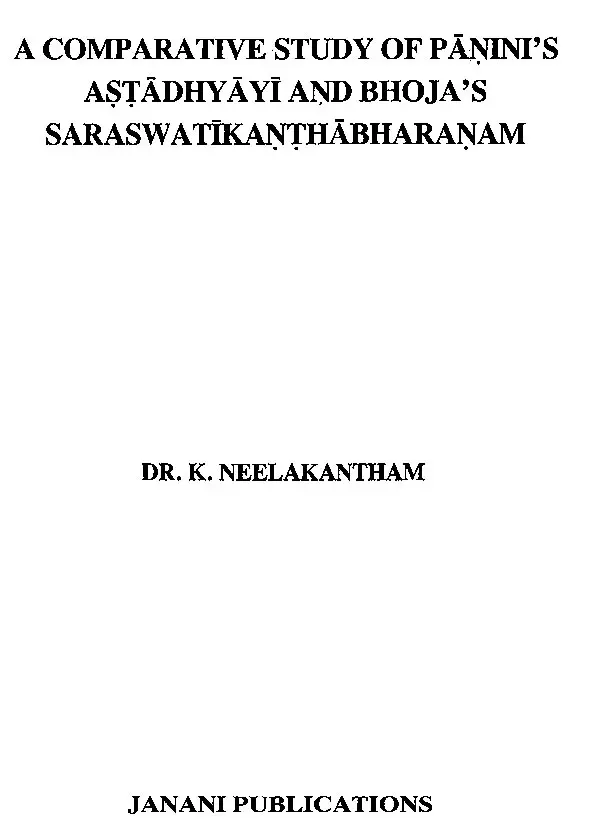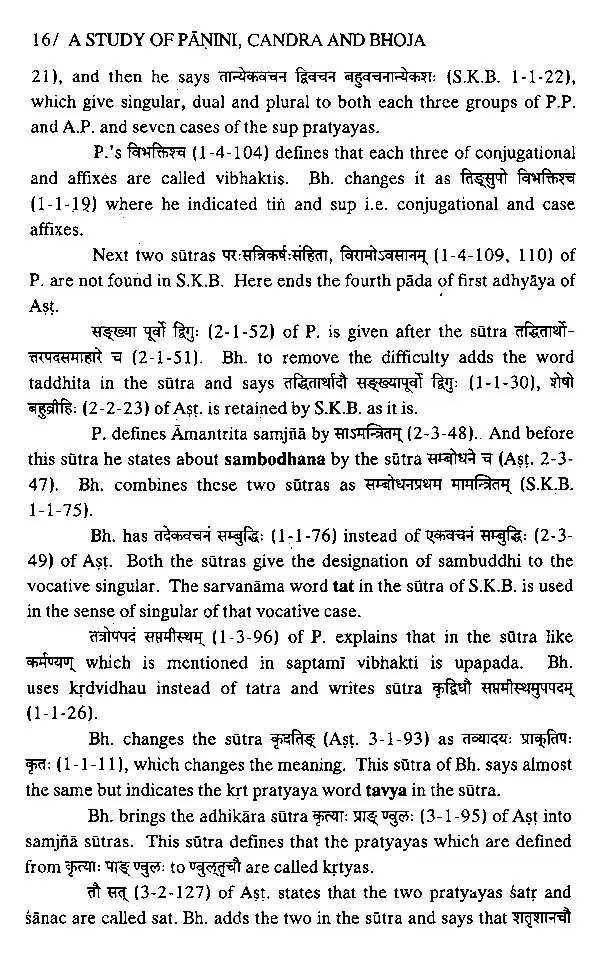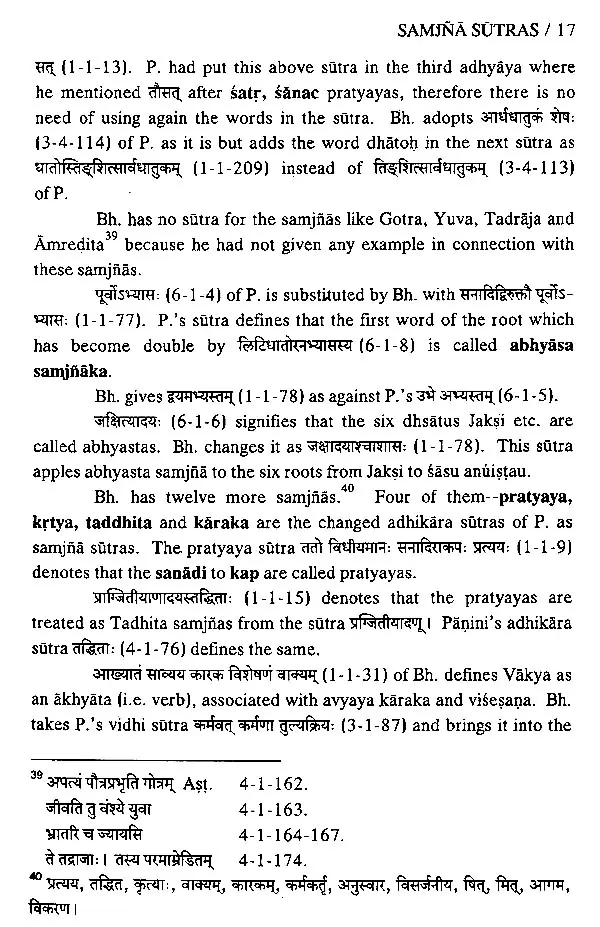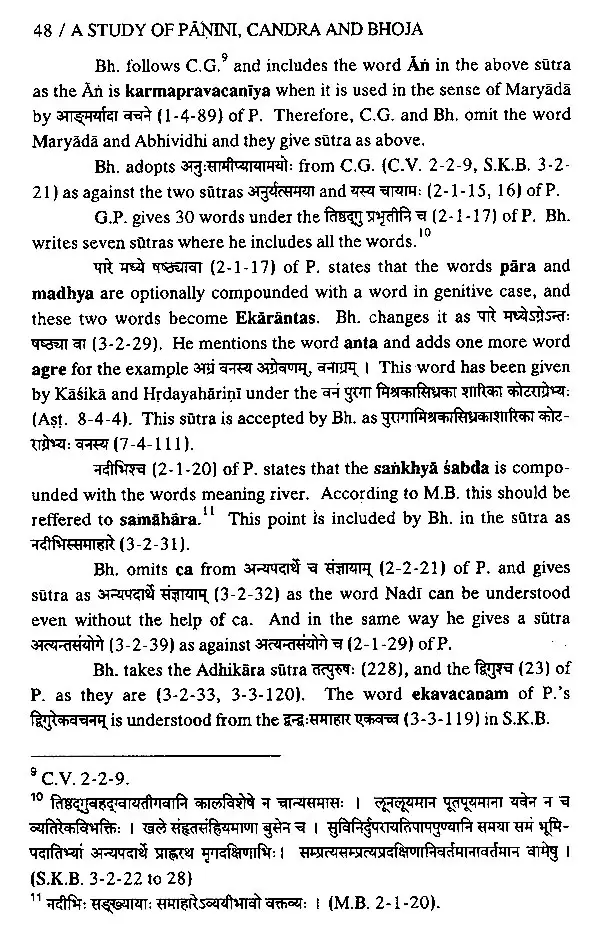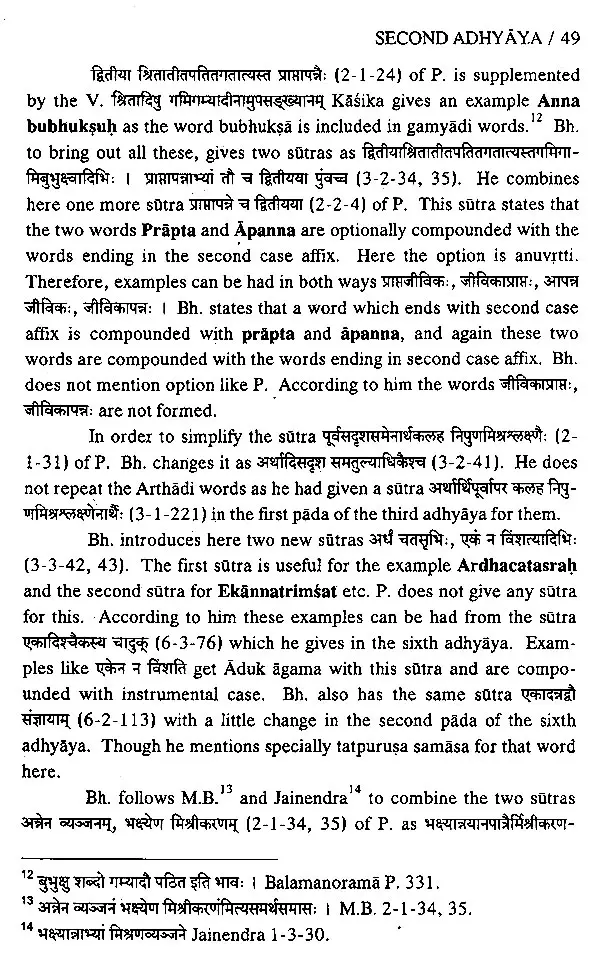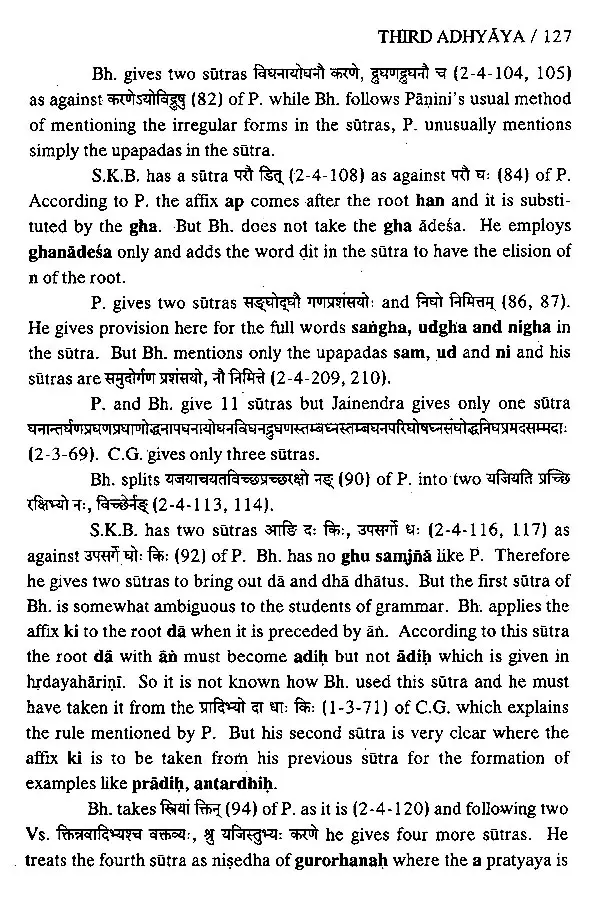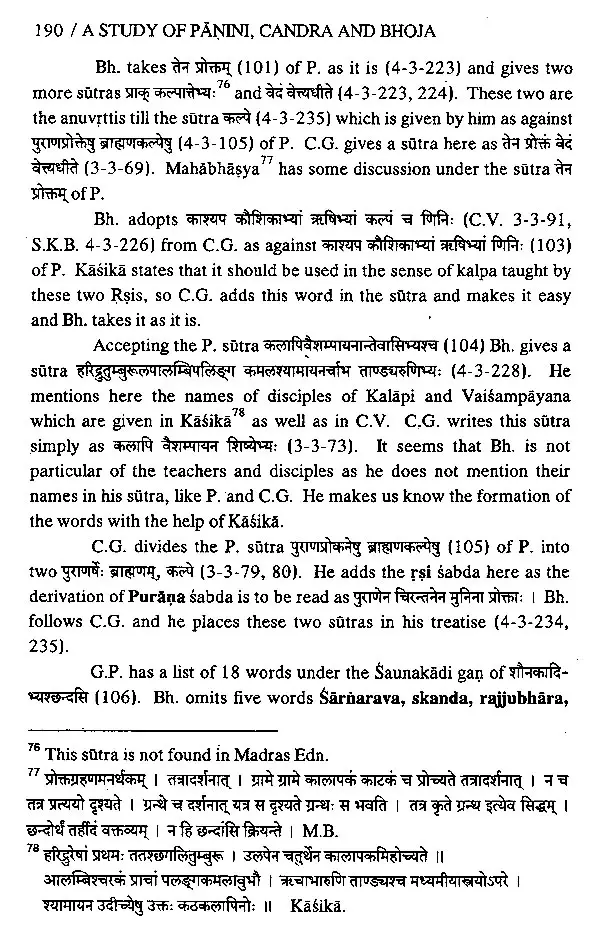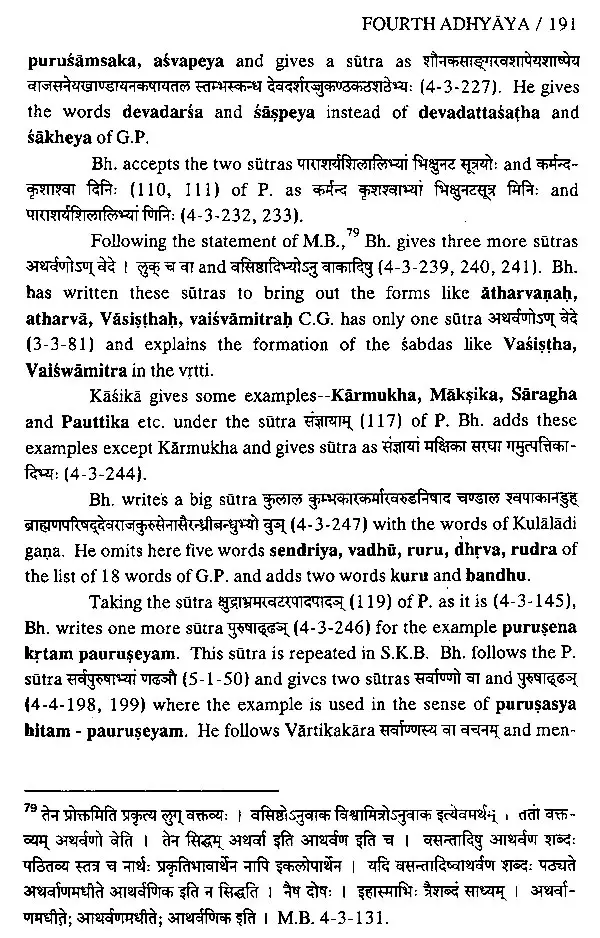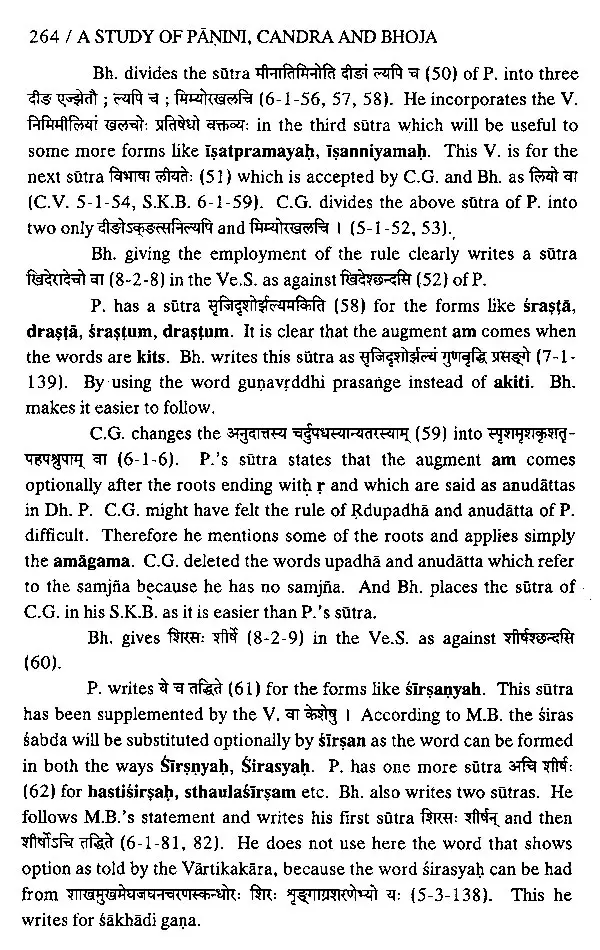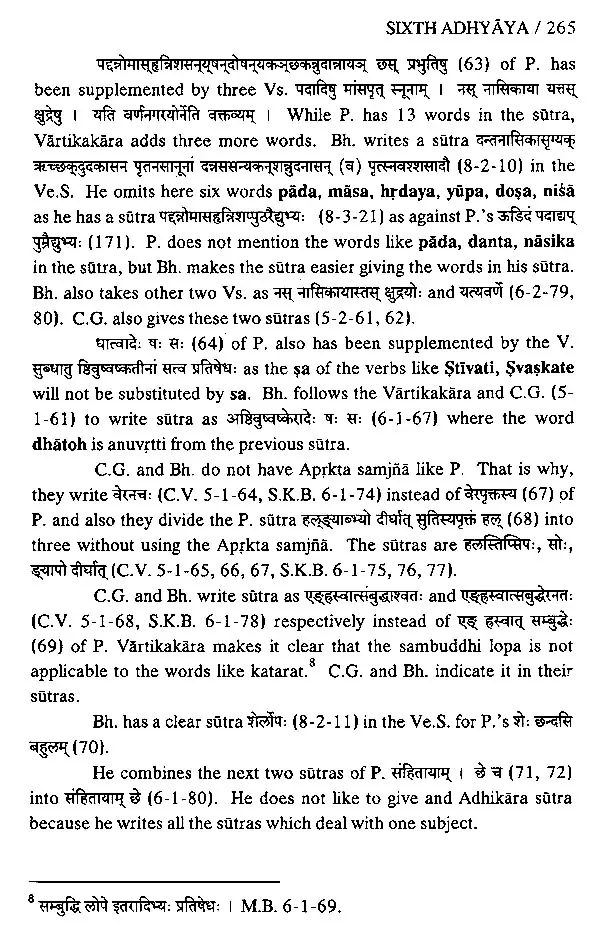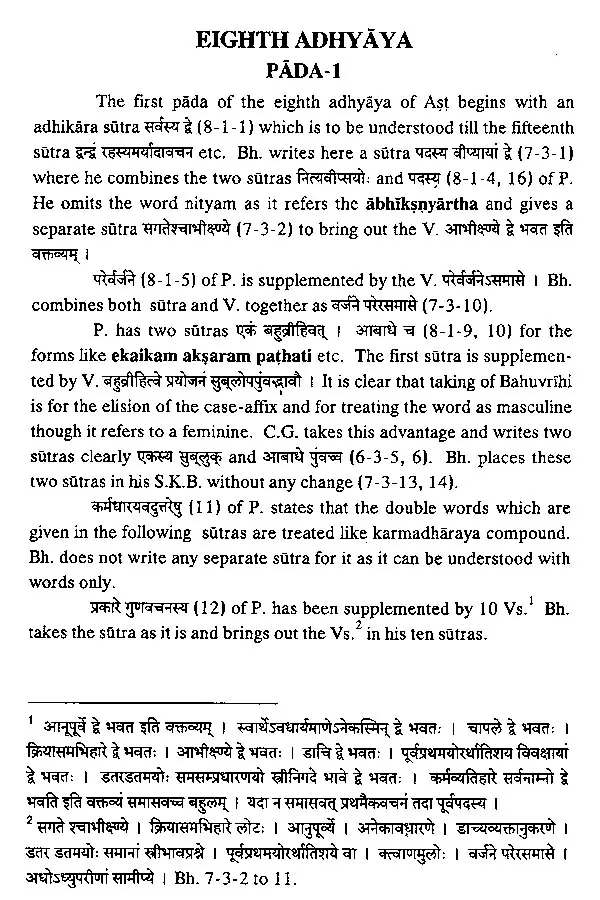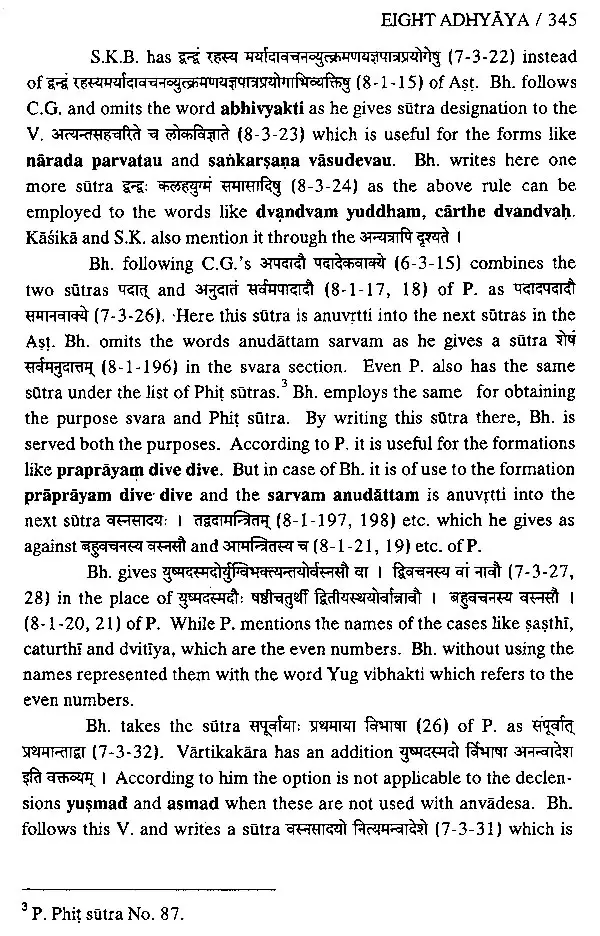
A Comparative Study of Panini's Astadhyayi and Bhoja's Saraswatikanthabharanam (An Old and Rare Book)
Book Specification
| Item Code: | UAH697 |
| Author: | K. NEELAKANTHAM |
| Publisher: | Janani Publications, Hyderabad |
| Language: | English and Sanskrit |
| Edition: | 2002 |
| Pages: | 417 |
| Cover: | HARDCOVER |
| Other Details | 9.00 X 6.00 inch |
| Weight | 620 gm |
Book Description
The present work was carried out by me at the Department of Sanskrit in 1989 for the Doctoral Degree. It was done under the guidance of my revered Guru Mahamahopadhyaya Professor P. Sri Ramachandraudu, an eminent scholar of various sastras. Inspite of his busy schedule and incessant service to all the sastras Guruji directs all his students with utmost care and loving kindness. I am extremely grateful to the great scholar for all the help, encouragement and excellent blessings I received from him. Indeed anything that is found good is wholly due to him and the entire responsibility is of mine for the imperfections that would occure in this study.
This work I am placing in hands of scholars of Sanskrit Grammar so that the study of different grammars may be pursued in course of time by those who are interested in this subject.
Bhoja Maharaja composed two works with the same title called Saraswatikanthabharanam. His work with this title on poetics is very well known in the field of Sanskrit literature and the grammatical work with the same is also known to scholars doing research in the field of Sanskrit Grammar. This work consists eight adhyayas and four padas each as the ancient grammatical work Astádhyayī of Panini. I have tried to bring out the sutras of Panini and those of Bhoja together and discuss the modifications in the latter's work. While comparing the sutras of both I have taken the help of Mahabhasyam, Kašika, Jainendra vyakranam and also quoted the sutras of Candragomin whose influence is very much seen on Bhoja. For the studies of my research I have followed Kasika along with Nyasa and Padamanjari published by Sanskrit Academy. Osmania University in eight volumes. And Saraswatikanthabharanam I have followed the edition of the University of Madras published in 1937 without any commentary and also the edition was published with the commentory Hrdayaharini Narayana Dandanátha edited by Sri K. Sambasiva sastry and V.A. Ramaswami sastry. It was available upto sixth adhyaya only. According to the preface of the Madras edition of Saraswatikantha-bharanam it is said. that Hrdayaharini is written upto seventh Adhyaya, which I could not procure. I have given the sutras in Devanagari script while making the comparison and also given lists of similar sûtras and the sütras incorporated by Bhoja with a simple change, and his new sutras separately at the end of every chapter.
An attempt is made here in this work at a comparative study of Panini's Astadhyayi and Bhoja's Saraswatikanthabharanam and candra vyakarana also as a side reference in many places.
Panini is the most celebrated grammarian of Sanskrit language. It is undisputed fact that his work Astadhyayi is the best and the most authoritative grammar. He wrote Astádhyayi for the language spoken during his time which had changed considerably from the Vedic language. There were many grammarians before Panini.
Panini in his grammar has exhaustively explained the system of both Vedic and classical language, the language written as well as spoken during his time. In this process he has discussed the formation of different types of words like nouns, pronouns, adjectives, verbs, indeclinables, coalescence of letters and compound words.
There is a difference of opinion regarding the age of Panini. Goldstucker and many Indian scholars are in favour of placing him in 700 B.C.
The title of Panini's treatise, like his sutras is direct, up to the point. The name itself says that it is a work of eight adhyayas.
The items which are discussed in Ast. are Samjnas, paribhasas, nit and kit suffixes, Atmanepada and Parasmaipada verbal terminations, karakas, gatis, karmapravacanīyas, samasas, upapada vibhaktis, Adeśast of stems, Adesas of roots, vikarana pratyayas like sya, sic, sa, sap etc.. krt pratyayas, conjungations vibhaktis, Taddhita and samasanta pratyayas, reduplication i.e. dvitvavidhi, vocalisation or samprasarana vidhi substitutions like a, sa, na, sandhi rules, vibhakti and samasa accents, Aluk, masculisation of words, i.e. pumvadhava, substitutions like yu, vu, r dirgha, guna augments like num, it, sarvanamas, etc.
P. has appended Ganapatha, Unadi and Phit sutras to his work which have a direct bearing on the Astadhyayi. The roots are grouped under ten major heads called ganas. Unadi sutras are of two types Dasapadi and Pancapadi.
After Panini katyayana wrote Vs. In addition to the rules of Ast a few more rules are added through these Vs in order to explain the new forms which came into usage in the language after P.'s time.
Patanjali wrote Mahabhasyam on the Ast. In this M.B. he has explained both the sutras and Vs. But when dealing with the Vs Patanjali rejected many of them as he found them unnecessary. He could prove that the sutras of P. even without the supplements of Vārtikakāra, themselves have enough scope of encompassing all the so called new points of Vs. He expressed the points of his interpretation through the Istis and cited many examples for the usage. M.B. is divided into eight adhyayas and each in to four pâdas like Ast. and also there is sub-division of M.B. of each pada into nine ahnikas.
Many vrttis are written on Ast. but Kasikā, a joint work of Vamana and Jayaditya is an elaborate and exhaustive commentary on Ast.
Cândravyakarana written by Buddhist scholar Candragomin of about 470 A.D. is considered to be the earliest recast of Paninian system. He incorporated the Vs of Katyayana and Istis of Mahabhasya also, in his work. It consists of 3,100 sutras which deal exclusively with classical language. Candragomin introduced some modifications and tried to simplify the sutras of P." C.G. like P. has his own Ganapatha. Dhatupatha, Unadi Patha and Linganusasana.
